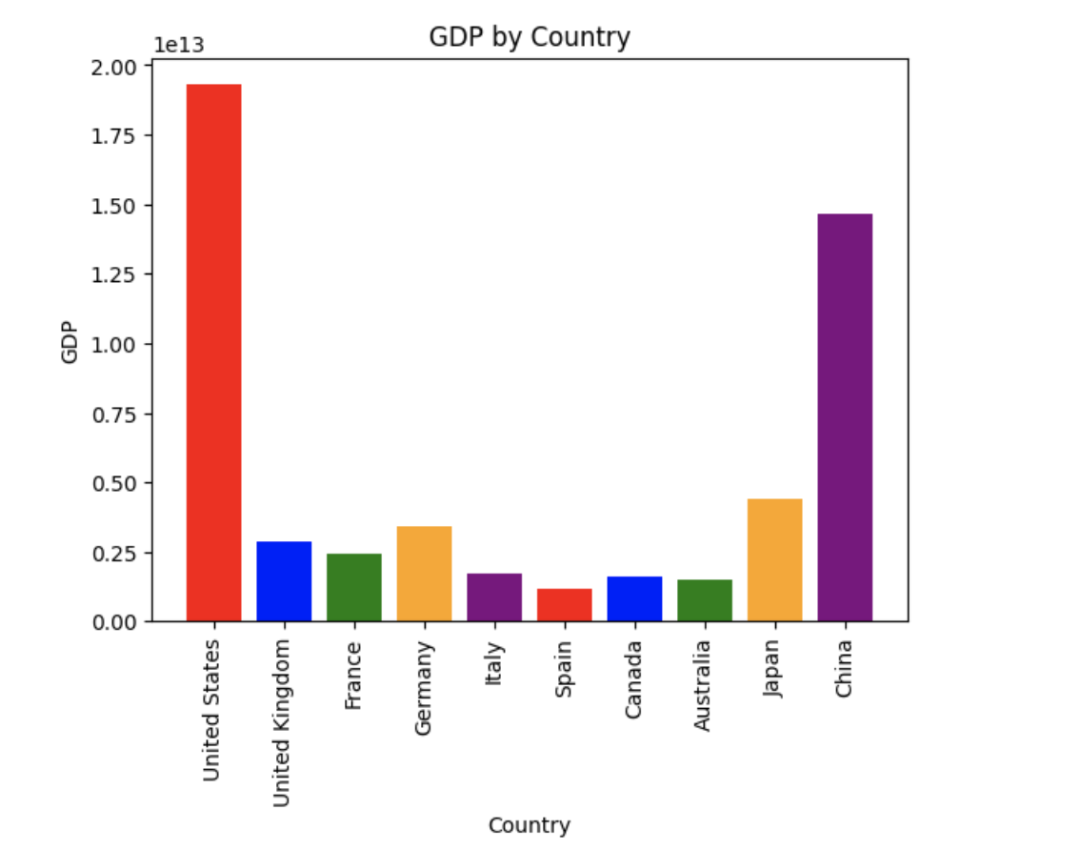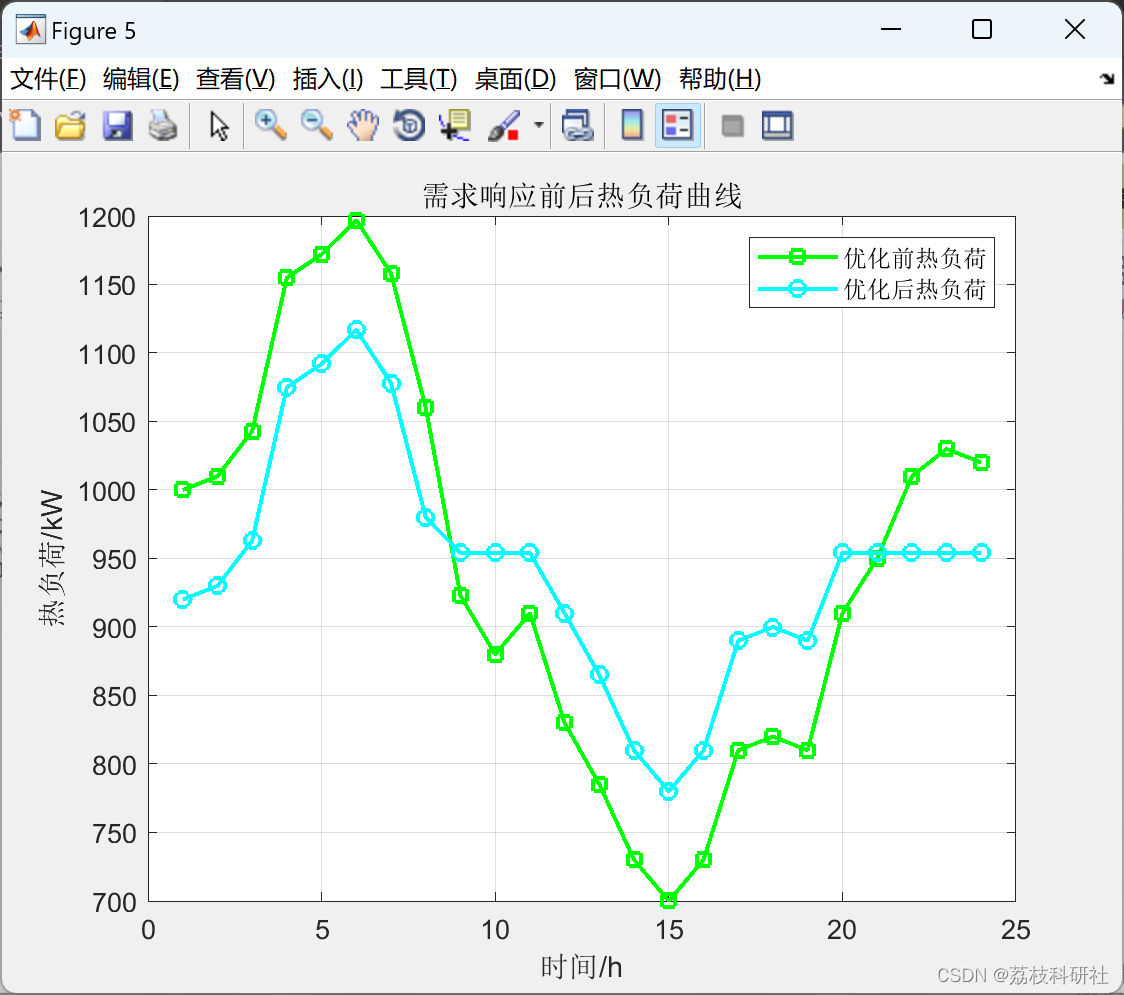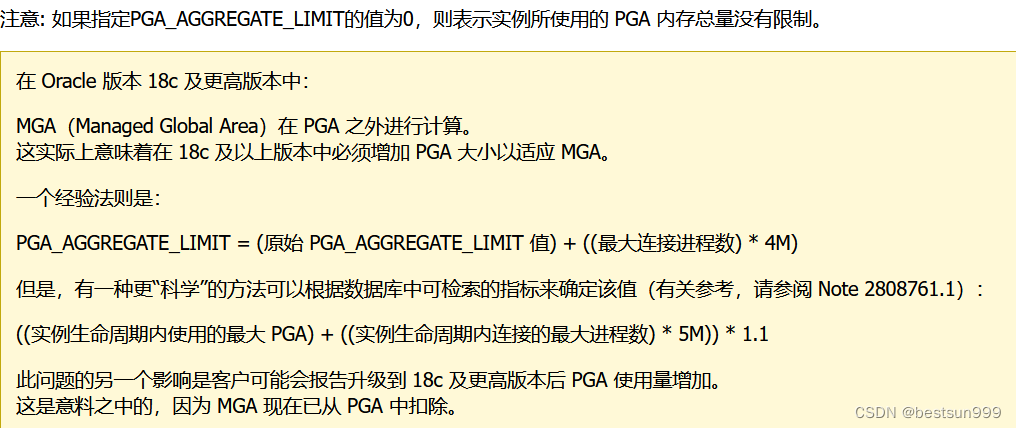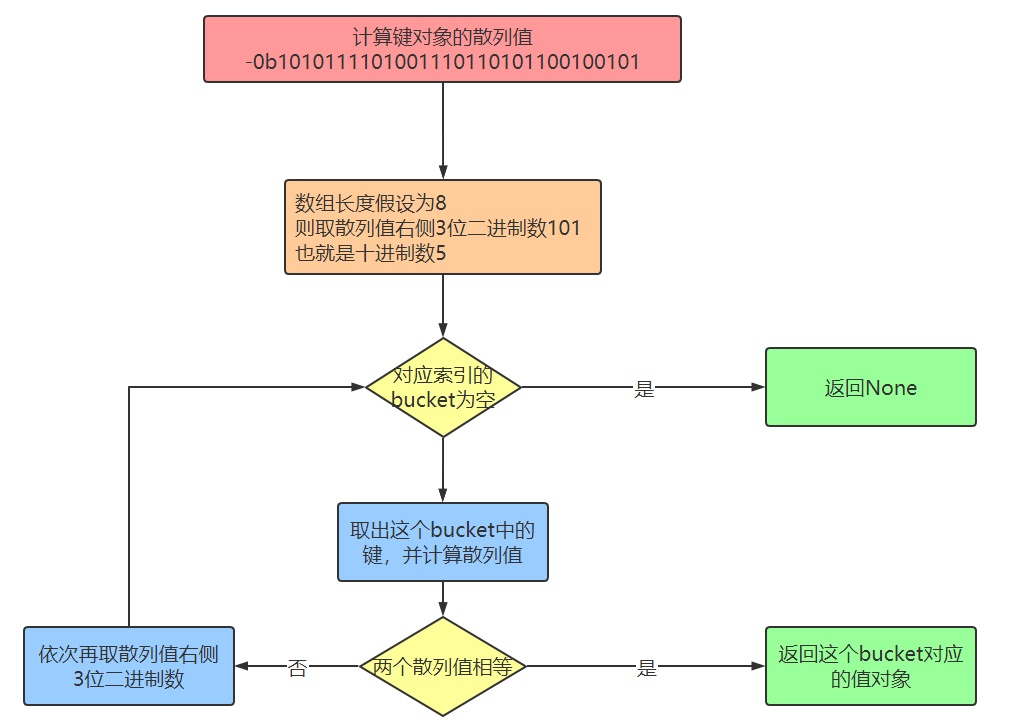MyBatis源码学习
最近在学习MyBatis的代码。记录下
首先下载下源码:
https://github.com/mybatis/parent
https://github.com/mybatis/mybatis-3
parent为父控依赖。也需要下载。
入口
InputStream inputStream = null;
try {
// 获取配置文件
inputStream = Resources.getResourceAsStream("mybatis-config.xml");
// 解析配置文件,并获取SqlSessionFactory对象
SqlSessionFactory factory = new SqlSessionFactoryBuilder().build(inputStream);
SqlSession session = factory.openSession();
UserMapper mapper = session.getMapper(UserMapper.class);
String userName = mapper.getUserNameById("5");
System.err.println(userName);
} catch (IOException e) {
throw new RuntimeException(e);
}
一、创建DefaultSqlSessionFactory对象
第一步中是读取资源的,这里就不做分析了。
mybatis的配置介绍:
https://mybatis.org/mybatis-3/zh/configuration.html
第二步构建SqlSessionFactory,这里会根据解析的mybatis-config.xml来构建一个SqlSessionFactory。
经过多次的build方法重载会进入解析xml的方法中。最终new一个DefaultSqlSessionFactory出来。
public SqlSessionFactory build(InputStream inputStream, String environment, Properties properties) {
try {
XMLConfigBuilder parser = new XMLConfigBuilder(inputStream, environment, properties);
return build(parser.parse());
} catch (Exception e) {
throw ExceptionFactory.wrapException("Error building SqlSession.", e);
} finally {
ErrorContext.instance().reset();
try {
if (inputStream != null) {
inputStream.close();
}
} catch (IOException e) {
// Intentionally ignore. Prefer previous error.
}
}
}
public SqlSessionFactory build(Configuration config) {
return new DefaultSqlSessionFactory(config);
}
- XMLConfigBuilder
先看看XMLConfigBuilder继承自BaseBuilder.
public class XMLConfigBuilder extends BaseBuilder {
public XMLConfigBuilder(InputStream inputStream, String environment, Properties props) {
this(Configuration.class, inputStream, environment, props);
}
public XMLConfigBuilder(Class<? extends Configuration> configClass, Reader reader, String environment,
Properties props) {
this(configClass, new XPathParser(reader, true, props, new XMLMapperEntityResolver()), environment, props);
}
private XMLConfigBuilder(Class<? extends Configuration> configClass, XPathParser parser, String environment,
Properties props) {
super(newConfig(configClass));
ErrorContext.instance().resource("SQL Mapper Configuration");
this.configuration.setVariables(props);
this.parsed = false;
this.environment = environment;
this.parser = parser;
}
// 上边传入的就是Configuration.class,这里反射去创建一个Configuration对象。
private static Configuration newConfig(Class<? extends Configuration> configClass) {
try {
return configClass.getDeclaredConstructor().newInstance();
} catch (Exception ex) {
throw new BuilderException("Failed to create a new Configuration instance.", ex);
}
}
}
public abstract class BaseBuilder {
// 配置文件
protected final Configuration configuration;
// 别名处理器注册
protected final TypeAliasRegistry typeAliasRegistry;
// 类型处理器注册
protected final TypeHandlerRegistry typeHandlerRegistry;
}
- Configuration
再看看Configuration对象的构造函数。这里全都是类型注册的别名映射。
public Configuration(Environment environment) {
this();
this.environment = environment;
}
// 别名初始配置
public Configuration() {
typeAliasRegistry.registerAlias("JDBC", JdbcTransactionFactory.class);
typeAliasRegistry.registerAlias("MANAGED", ManagedTransactionFactory.class);
typeAliasRegistry.registerAlias("JNDI", JndiDataSourceFactory.class);
typeAliasRegistry.registerAlias("POOLED", PooledDataSourceFactory.class);
typeAliasRegistry.registerAlias("UNPOOLED", UnpooledDataSourceFactory.class);
typeAliasRegistry.registerAlias("PERPETUAL", PerpetualCache.class);
typeAliasRegistry.registerAlias("FIFO", FifoCache.class);
typeAliasRegistry.registerAlias("LRU", LruCache.class);
typeAliasRegistry.registerAlias("SOFT", SoftCache.class);
typeAliasRegistry.registerAlias("WEAK", WeakCache.class);
typeAliasRegistry.registerAlias("DB_VENDOR", VendorDatabaseIdProvider.class);
typeAliasRegistry.registerAlias("XML", XMLLanguageDriver.class);
typeAliasRegistry.registerAlias("RAW", RawLanguageDriver.class);
typeAliasRegistry.registerAlias("SLF4J", Slf4jImpl.class);
typeAliasRegistry.registerAlias("COMMONS_LOGGING", JakartaCommonsLoggingImpl.class);
typeAliasRegistry.registerAlias("LOG4J", Log4jImpl.class);
typeAliasRegistry.registerAlias("LOG4J2", Log4j2Impl.class);
typeAliasRegistry.registerAlias("JDK_LOGGING", Jdk14LoggingImpl.class);
typeAliasRegistry.registerAlias("STDOUT_LOGGING", StdOutImpl.class);
typeAliasRegistry.registerAlias("NO_LOGGING", NoLoggingImpl.class);
typeAliasRegistry.registerAlias("CGLIB", CglibProxyFactory.class);
typeAliasRegistry.registerAlias("JAVASSIST", JavassistProxyFactory.class);
languageRegistry.setDefaultDriverClass(XMLLanguageDriver.class);
languageRegistry.register(RawLanguageDriver.class);
}
全局配置文件解析:XMLConfigBuilder.parse
propertiesElement方法:解析properties配置项
settingsAsProperties方法:解析settings标签
loadCustomVfs方法:读取vfs文件
loadCustomLogImpl方法:解析日志设置
typeAliasesElement方法:解析类型别名配置项
pluginElement方法:解析插件配置
objectFactoryElement方法:创建对象
objectWrapperFactoryElement方法:对对象进行包装
reflectorFactoryElement方法:
public Configuration parse() {
if (parsed) {
throw new BuilderException("Each XMLConfigBuilder can only be used once.");
}
parsed = true;
parseConfiguration(parser.evalNode("/configuration"));
return configuration;
}
private void parseConfiguration(XNode root) {
try {
// issue #117 read properties first
propertiesElement(root.evalNode("properties"));
Properties settings = settingsAsProperties(root.evalNode("settings"));
loadCustomVfs(settings);
loadCustomLogImpl(settings);
typeAliasesElement(root.evalNode("typeAliases"));
pluginElement(root.evalNode("plugins"));
objectFactoryElement(root.evalNode("objectFactory"));
objectWrapperFactoryElement(root.evalNode("objectWrapperFactory"));
reflectorFactoryElement(root.evalNode("reflectorFactory"));
settingsElement(settings);
// read it after objectFactory and objectWrapperFactory issue #631
environmentsElement(root.evalNode("environments"));
databaseIdProviderElement(root.evalNode("databaseIdProvider"));
typeHandlerElement(root.evalNode("typeHandlers"));
mapperElement(root.evalNode("mappers"));
} catch (Exception e) {
throw new BuilderException("Error parsing SQL Mapper Configuration. Cause: " + e, e);
}
}
propertiesElement
加载properties资源
private void propertiesElement(XNode context) throws Exception {
if (context != null) {
Properties defaults = context.getChildrenAsProperties();
String resource = context.getStringAttribute("resource");
String url = context.getStringAttribute("url");
if (resource != null && url != null) {
throw new BuilderException(
"The properties element cannot specify both a URL and a resource based property file reference. Please specify one or the other.");
}
if (resource != null) {
defaults.putAll(Resources.getResourceAsProperties(resource));
} else if (url != null) {
defaults.putAll(Resources.getUrlAsProperties(url));
}
Properties vars = configuration.getVariables();
if (vars != null) {
defaults.putAll(vars);
}
parser.setVariables(defaults);
configuration.setVariables(defaults);
}
}
settingsAsProperties
把settings配置也解析成properties文件
private Properties settingsAsProperties(XNode context) {
if (context == null) {
return new Properties();
}
Properties props = context.getChildrenAsProperties();
// Check that all settings are known to the configuration class
MetaClass metaConfig = MetaClass.forClass(Configuration.class, localReflectorFactory);
// 获取到Configuration的属性和方法后,检查是否存在xml配置中的属性是否存在
for (Object key : props.keySet()) {
// hasSetter方法在下边代码块中放着
if (!metaConfig.hasSetter(String.valueOf(key))) {
throw new BuilderException(
"The setting " + key + " is not known. Make sure you spelled it correctly (case sensitive).");
}
}
return props;
}
- MetaClass.forClass
反射:创建了一个reflector对象出来,这个reflector对象就是把Configuration中所有的属性和方法都获取到。
private MetaClass(Class<?> type, ReflectorFactory reflectorFactory) {
this.reflectorFactory = reflectorFactory;
this.reflector = reflectorFactory.findForClass(type);
}
public static MetaClass forClass(Class<?> type, ReflectorFactory reflectorFactory) {
return new MetaClass(type, reflectorFactory);
}
// 检查prop中的属性是否存在对象的属性,如果不存在直接报错
public boolean hasSetter(String name) {
PropertyTokenizer prop = new PropertyTokenizer(name);
if (!prop.hasNext()) {
return reflector.hasSetter(prop.getName());
}
if (reflector.hasSetter(prop.getName())) {
MetaClass metaProp = metaClassForProperty(prop.getName());
return metaProp.hasSetter(prop.getChildren());
} else {
return false;
}
}
- DefaultReflectorFactory.findForClass
@Override
public Reflector findForClass(Class<?> type) {
if (classCacheEnabled) {
// synchronized (type) removed see issue #461
return MapUtil.computeIfAbsent(reflectorMap, type, Reflector::new);
}
return new Reflector(type);
}
loadCustomVfs
加载vfs标签,这个我在近5年都没有用过,也没了解过这个。这个就直接跳过了
private void loadCustomVfs(Properties props) throws ClassNotFoundException {
String value = props.getProperty("vfsImpl");
if (value != null) {
String[] clazzes = value.split(",");
for (String clazz : clazzes) {
if (!clazz.isEmpty()) {
@SuppressWarnings("unchecked")
Class<? extends VFS> vfsImpl = (Class<? extends VFS>) Resources.classForName(clazz);
configuration.setVfsImpl(vfsImpl);
}
}
}
}
loadCustomLogImpl
这里是日志配置选项

可以看到mybatis适配了多种的实现。
private void loadCustomLogImpl(Properties props) {
Class<? extends Log> logImpl = resolveClass(props.getProperty("logImpl"));
configuration.setLogImpl(logImpl);
}
- BaseBuilder.resolveClass
这里可以看到最终解析的log也可以自定义,只要实现了Log接口,并且注册到configuration中的typeAlias中就可以。
protected final Configuration configuration;
protected final TypeAliasRegistry typeAliasRegistry;
protected final TypeHandlerRegistry typeHandlerRegistry;
public BaseBuilder(Configuration configuration) {
this.configuration = configuration;
this.typeAliasRegistry = this.configuration.getTypeAliasRegistry();
this.typeHandlerRegistry = this.configuration.getTypeHandlerRegistry();
}
protected <T> Class<? extends T> resolveClass(String alias) {
if (alias == null) {
return null;
}
try {
return resolveAlias(alias);
} catch (Exception e) {
throw new BuilderException("Error resolving class. Cause: " + e, e);
}
}
protected <T> Class<? extends T> resolveAlias(String alias) {
return typeAliasRegistry.resolveAlias(alias);
}
typeAliasesElement
中文官网:https://mybatis.org/mybatis-3/zh/configuration.html#typeAliases
<typeAliases>
<!-- <package name="domain.blog"/> -->
<typeAlias alias="Author" type="domain.blog.Author"/>
</typeAliases>
@Alias("author")
public class Author {
private String id;
}
typeAliasRegistry这个是类型别名注册器。类型别名总共有3种使用方式。
- xml中配置package,从代码上看,package和alias只有一种会生效,而且package的优先级高
- xml中配置alias
- 在实体类上增加注解@Alias
private void typeAliasesElement(XNode parent) {
// 有设置过typeAliases配置
if (parent != null) {
for (XNode child : parent.getChildren()) {
// 如果配置了package就按照包名去扫描
if ("package".equals(child.getName())) {
String typeAliasPackage = child.getStringAttribute("name");
configuration.getTypeAliasRegistry().registerAliases(typeAliasPackage);
} else {
// 上边解析package的时候,下面的这些方法基本都会用到。就不做单独的分析了。
String alias = child.getStringAttribute("alias");
String type = child.getStringAttribute("type");
try {
Class<?> clazz = Resources.classForName(type);
if (alias == null) {
// 扫描@Alias注解
typeAliasRegistry.registerAlias(clazz);
} else {
typeAliasRegistry.registerAlias(alias, clazz);
}
} catch (ClassNotFoundException e) {
throw new BuilderException("Error registering typeAlias for '" + alias + "'. Cause: " + e, e);
}
}
}
}
}
- TypeAliasRegistry.registerAliases
public void registerAliases(String packageName) {
registerAliases(packageName, Object.class);
}
public void registerAliases(String packageName, Class<?> superType) {
// 实例ResolverUtil
ResolverUtil<Class<?>> resolverUtil = new ResolverUtil<>();
// 寻找package中所有的类
resolverUtil.find(new ResolverUtil.IsA(superType), packageName);
// 再通过resolverUtil.getClasses()获取到所有的类
Set<Class<? extends Class<?>>> typeSet = resolverUtil.getClasses();
// 循环遍历Set中所有的类
for (Class<?> type : typeSet) {
// Ignore inner classes and interfaces (including package-info.java)
// Skip also inner classes. See issue #6
if (!type.isAnonymousClass() && !type.isInterface() && !type.isMemberClass()) {
// 非匿名类,非接口,非内部类的话,就注册
registerAlias(type);
}
}
}
public void registerAlias(Class<?> type) {
String alias = type.getSimpleName();
Alias aliasAnnotation = type.getAnnotation(Alias.class);
if (aliasAnnotation != null) {
alias = aliasAnnotation.value();
}
registerAlias(alias, type);
}
private final Map<String, Class<?>> typeAliases = new HashMap<>();
public void registerAlias(String alias, Class<?> value) {
if (alias == null) {
throw new TypeException("The parameter alias cannot be null");
}
// issue #748
String key = alias.toLowerCase(Locale.ENGLISH);
// 已经注册过的话,就报错
if (typeAliases.containsKey(key) && typeAliases.get(key) != null && !typeAliases.get(key).equals(value)) {
throw new TypeException(
"The alias '" + alias + "' is already mapped to the value '" + typeAliases.get(key).getName() + "'.");
}
// 否则直接假如到typeAliases中
typeAliases.put(key, value);
}
// 再看看这里都是已经注册过的类,这时终于明白为什么可以直接在对应的类型上写string,写int了。typeAlias到此就结束了。
public TypeAliasRegistry() {
registerAlias("string", String.class);
registerAlias("byte", Byte.class);
registerAlias("char", Character.class);
registerAlias("character", Character.class);
registerAlias("long", Long.class);
registerAlias("short", Short.class);
registerAlias("int", Integer.class);
registerAlias("integer", Integer.class);
registerAlias("double", Double.class);
registerAlias("float", Float.class);
registerAlias("boolean", Boolean.class);
// ...
}
- ResolverUtil.find
package为传入的路径,遍历所有的class类,如果以.class结尾,loadClasss,然后加入到matches(Set)中.
private Set<Class<? extends T>> matches = new HashSet<>();
public ResolverUtil<T> find(Test test, String packageName) {
String path = getPackagePath(packageName);
try {
List<String> children = VFS.getInstance().list(path);
for (String child : children) {
if (child.endsWith(".class")) {
addIfMatching(test, child);
}
}
} catch (IOException ioe) {
log.error("Could not read package: " + packageName, ioe);
}
return this;
}
protected void addIfMatching(Test test, String fqn) {
try {
String externalName = fqn.substring(0, fqn.indexOf('.')).replace('/', '.');
ClassLoader loader = getClassLoader();
if (log.isDebugEnabled()) {
log.debug("Checking to see if class " + externalName + " matches criteria [" + test + "]");
}
Class<?> type = loader.loadClass(externalName);
if (test.matches(type)) {
matches.add((Class<T>) type);
}
} catch (Throwable t) {
log.warn("Could not examine class '" + fqn + "'" + " due to a " + t.getClass().getName() + " with message: "
+ t.getMessage());
}
}
public Set<Class<? extends T>> getClasses() {
return matches;
}
pluginElement
插件中文官网:https://mybatis.org/mybatis-3/zh/configuration.html#plugins
插件是可以配置多个的
<plugins>
<plugin interceptor="org.mybatis.example.ExamplePlugin">
<property name="someProperty" value="100"/>
</plugin>
</plugins>
private void pluginElement(XNode parent) throws Exception {
if (parent != null) {
// 循环解析插件配置
for (XNode child : parent.getChildren()) {
// 每个插件的实现类
String interceptor = child.getStringAttribute("interceptor");
Properties properties = child.getChildrenAsProperties();
// 实例插件类
Interceptor interceptorInstance = (Interceptor) resolveClass(interceptor).getDeclaredConstructor()
.newInstance();
interceptorInstance.setProperties(properties);
// 加到插件链中去,下面的代码可以看到插件是一个ArrayList
configuration.addInterceptor(interceptorInstance);
}
}
}
- Configuration.addInterceptor
protected final InterceptorChain interceptorChain = new InterceptorChain();
public void addInterceptor(Interceptor interceptor) {
interceptorChain.addInterceptor(interceptor);
}
- InterceptorChain.addInterceptor
public class InterceptorChain {
private final List<Interceptor> interceptors = new ArrayList<>();
public Object pluginAll(Object target) {
for (Interceptor interceptor : interceptors) {
target = interceptor.plugin(target);
}
return target;
}
public void addInterceptor(Interceptor interceptor) {
interceptors.add(interceptor);
}
public List<Interceptor> getInterceptors() {
return Collections.unmodifiableList(interceptors);
}
}
objectFactoryElement
默认的ObjectFactory实现。
在Configuration类中,protected ObjectFactory objectFactory = new DefaultObjectFactory();
objectFactory是这样实例的,就是直接new了一个DefaultObjectFactory。
如果不适用默认的实现,可以自己写一个,然后配置到xml中。解析的时候就会用到自己实现的。
private void objectFactoryElement(XNode context) throws Exception {
if (context != null) {
String type = context.getStringAttribute("type");
Properties properties = context.getChildrenAsProperties();
ObjectFactory factory = (ObjectFactory) resolveClass(type).getDeclaredConstructor().newInstance();
factory.setProperties(properties);
configuration.setObjectFactory(factory);
}
}
通过DefaultObjectFactory中的代码可以了解到这个类主要是为了创建类的。那么在整个适用的过程中,这个类应该是以单例的形式存在的。
public class DefaultObjectFactory implements ObjectFactory, Serializable {
private static final long serialVersionUID = -8855120656740914948L;
@Override
public <T> T create(Class<T> type) {
return create(type, null, null);
}
@SuppressWarnings("unchecked")
@Override
public <T> T create(Class<T> type, List<Class<?>> constructorArgTypes, List<Object> constructorArgs) {
Class<?> classToCreate = resolveInterface(type);
// we know types are assignable
return (T) instantiateClass(classToCreate, constructorArgTypes, constructorArgs);
}
private <T> T instantiateClass(Class<T> type, List<Class<?>> constructorArgTypes, List<Object> constructorArgs) {
try {
Constructor<T> constructor;
if (constructorArgTypes == null || constructorArgs == null) {
constructor = type.getDeclaredConstructor();
try {
return constructor.newInstance();
} catch (IllegalAccessException e) {
if (Reflector.canControlMemberAccessible()) {
constructor.setAccessible(true);
return constructor.newInstance();
}
throw e;
}
}
constructor = type.getDeclaredConstructor(constructorArgTypes.toArray(new Class[0]));
try {
return constructor.newInstance(constructorArgs.toArray(new Object[0]));
} catch (IllegalAccessException e) {
if (Reflector.canControlMemberAccessible()) {
constructor.setAccessible(true);
return constructor.newInstance(constructorArgs.toArray(new Object[0]));
}
throw e;
}
} catch (Exception e) {
String argTypes = Optional.ofNullable(constructorArgTypes).orElseGet(Collections::emptyList).stream()
.map(Class::getSimpleName).collect(Collectors.joining(","));
String argValues = Optional.ofNullable(constructorArgs).orElseGet(Collections::emptyList).stream()
.map(String::valueOf).collect(Collectors.joining(","));
throw new ReflectionException("Error instantiating " + type + " with invalid types (" + argTypes + ") or values ("
+ argValues + "). Cause: " + e, e);
}
}
protected Class<?> resolveInterface(Class<?> type) {
Class<?> classToCreate;
if (type == List.class || type == Collection.class || type == Iterable.class) {
classToCreate = ArrayList.class;
} else if (type == Map.class) {
classToCreate = HashMap.class;
} else if (type == SortedSet.class) { // issue #510 Collections Support
classToCreate = TreeSet.class;
} else if (type == Set.class) {
classToCreate = HashSet.class;
} else {
classToCreate = type;
}
return classToCreate;
}
@Override
public <T> boolean isCollection(Class<T> type) {
return Collection.class.isAssignableFrom(type);
}
objectWrapperFactoryElement
这个用于对对象进行包装,名字带有wrapper,跟上边的是一样的加载逻辑
private void objectWrapperFactoryElement(XNode context) throws Exception {
if (context != null) {
String type = context.getStringAttribute("type");
ObjectWrapperFactory factory = (ObjectWrapperFactory) resolveClass(type).getDeclaredConstructor().newInstance();
configuration.setObjectWrapperFactory(factory);
}
}
reflectorFactoryElement
这个是反射类,实例化过程和上边的一样
private void reflectorFactoryElement(XNode context) throws Exception {
if (context != null) {
String type = context.getStringAttribute("type");
ReflectorFactory factory = (ReflectorFactory) resolveClass(type).getDeclaredConstructor().newInstance();
configuration.setReflectorFactory(factory);
}
}
settingsElement
这个是配置文件中的setting设置的属性,都有一个默认的值。
private void settingsElement(Properties props) {
configuration
.setAutoMappingBehavior(AutoMappingBehavior.valueOf(props.getProperty("autoMappingBehavior", "PARTIAL")));
configuration.setAutoMappingUnknownColumnBehavior(
AutoMappingUnknownColumnBehavior.valueOf(props.getProperty("autoMappingUnknownColumnBehavior", "NONE")));
configuration.setCacheEnabled(booleanValueOf(props.getProperty("cacheEnabled"), true));
configuration.setProxyFactory((ProxyFactory) createInstance(props.getProperty("proxyFactory")));
configuration.setLazyLoadingEnabled(booleanValueOf(props.getProperty("lazyLoadingEnabled"), false));
configuration.setAggressiveLazyLoading(booleanValueOf(props.getProperty("aggressiveLazyLoading"), false));
configuration.setMultipleResultSetsEnabled(booleanValueOf(props.getProperty("multipleResultSetsEnabled"), true));
configuration.setUseColumnLabel(booleanValueOf(props.getProperty("useColumnLabel"), true));
configuration.setUseGeneratedKeys(booleanValueOf(props.getProperty("useGeneratedKeys"), false));
configuration.setDefaultExecutorType(ExecutorType.valueOf(props.getProperty("defaultExecutorType", "SIMPLE")));
configuration.setDefaultStatementTimeout(integerValueOf(props.getProperty("defaultStatementTimeout"), null));
configuration.setDefaultFetchSize(integerValueOf(props.getProperty("defaultFetchSize"), null));
configuration.setDefaultResultSetType(resolveResultSetType(props.getProperty("defaultResultSetType")));
configuration.setMapUnderscoreToCamelCase(booleanValueOf(props.getProperty("mapUnderscoreToCamelCase"), false));
configuration.setSafeRowBoundsEnabled(booleanValueOf(props.getProperty("safeRowBoundsEnabled"), false));
configuration.setLocalCacheScope(LocalCacheScope.valueOf(props.getProperty("localCacheScope", "SESSION")));
configuration.setJdbcTypeForNull(JdbcType.valueOf(props.getProperty("jdbcTypeForNull", "OTHER")));
configuration.setLazyLoadTriggerMethods(
stringSetValueOf(props.getProperty("lazyLoadTriggerMethods"), "equals,clone,hashCode,toString"));
configuration.setSafeResultHandlerEnabled(booleanValueOf(props.getProperty("safeResultHandlerEnabled"), true));
configuration.setDefaultScriptingLanguage(resolveClass(props.getProperty("defaultScriptingLanguage")));
configuration.setDefaultEnumTypeHandler(resolveClass(props.getProperty("defaultEnumTypeHandler")));
configuration.setCallSettersOnNulls(booleanValueOf(props.getProperty("callSettersOnNulls"), false));
configuration.setUseActualParamName(booleanValueOf(props.getProperty("useActualParamName"), true));
configuration.setReturnInstanceForEmptyRow(booleanValueOf(props.getProperty("returnInstanceForEmptyRow"), false));
configuration.setLogPrefix(props.getProperty("logPrefix"));
configuration.setConfigurationFactory(resolveClass(props.getProperty("configurationFactory")));
configuration.setShrinkWhitespacesInSql(booleanValueOf(props.getProperty("shrinkWhitespacesInSql"), false));
configuration.setArgNameBasedConstructorAutoMapping(
booleanValueOf(props.getProperty("argNameBasedConstructorAutoMapping"), false));
configuration.setDefaultSqlProviderType(resolveClass(props.getProperty("defaultSqlProviderType")));
configuration.setNullableOnForEach(booleanValueOf(props.getProperty("nullableOnForEach"), false));
}
environmentsElement & databaseIdProviderElement
创建数据源
private void environmentsElement(XNode context) throws Exception {
if (context != null) {
if (environment == null) {
environment = context.getStringAttribute("default");
}
for (XNode child : context.getChildren()) {
String id = child.getStringAttribute("id");
if (isSpecifiedEnvironment(id)) {
TransactionFactory txFactory = transactionManagerElement(child.evalNode("transactionManager"));
DataSourceFactory dsFactory = dataSourceElement(child.evalNode("dataSource"));
DataSource dataSource = dsFactory.getDataSource();
Environment.Builder environmentBuilder = new Environment.Builder(id).transactionFactory(txFactory)
.dataSource(dataSource);
configuration.setEnvironment(environmentBuilder.build());
break;
}
}
}
}
private void databaseIdProviderElement(XNode context) throws Exception {
DatabaseIdProvider databaseIdProvider = null;
if (context != null) {
String type = context.getStringAttribute("type");
// awful patch to keep backward compatibility
if ("VENDOR".equals(type)) {
type = "DB_VENDOR";
}
Properties properties = context.getChildrenAsProperties();
databaseIdProvider = (DatabaseIdProvider) resolveClass(type).getDeclaredConstructor().newInstance();
databaseIdProvider.setProperties(properties);
}
Environment environment = configuration.getEnvironment();
if (environment != null && databaseIdProvider != null) {
String databaseId = databaseIdProvider.getDatabaseId(environment.getDataSource());
configuration.setDatabaseId(databaseId);
}
}
typeHandlerElement
创建类型转换器
private void typeHandlerElement(XNode parent) {
if (parent != null) {
for (XNode child : parent.getChildren()) {
if ("package".equals(child.getName())) {
String typeHandlerPackage = child.getStringAttribute("name");
typeHandlerRegistry.register(typeHandlerPackage);
} else {
String javaTypeName = child.getStringAttribute("javaType");
String jdbcTypeName = child.getStringAttribute("jdbcType");
String handlerTypeName = child.getStringAttribute("handler");
Class<?> javaTypeClass = resolveClass(javaTypeName);
JdbcType jdbcType = resolveJdbcType(jdbcTypeName);
Class<?> typeHandlerClass = resolveClass(handlerTypeName);
if (javaTypeClass != null) {
if (jdbcType == null) {
typeHandlerRegistry.register(javaTypeClass, typeHandlerClass);
} else {
typeHandlerRegistry.register(javaTypeClass, jdbcType, typeHandlerClass);
}
} else {
typeHandlerRegistry.register(typeHandlerClass);
}
}
}
}
}
- TypeHandlerRegistry.register
private final Map<JdbcType, TypeHandler<?>> jdbcTypeHandlerMap = new EnumMap<>(JdbcType.class);
private final Map<Class<?>, TypeHandler<?>> allTypeHandlersMap = new HashMap<>();
public <T> void register(TypeHandler<T> typeHandler) {
boolean mappedTypeFound = false;
MappedTypes mappedTypes = typeHandler.getClass().getAnnotation(MappedTypes.class);
if (mappedTypes != null) {
for (Class<?> handledType : mappedTypes.value()) {
register(handledType, typeHandler);
mappedTypeFound = true;
}
}
// @since 3.1.0 - try to auto-discover the mapped type
if (!mappedTypeFound && typeHandler instanceof TypeReference) {
try {
TypeReference<T> typeReference = (TypeReference<T>) typeHandler;
register(typeReference.getRawType(), typeHandler);
mappedTypeFound = true;
} catch (Throwable t) {
// maybe users define the TypeReference with a different type and are not assignable, so just ignore it
}
}
if (!mappedTypeFound) {
register((Class<T>) null, typeHandler);
}
}
private <T> void register(Type javaType, TypeHandler<? extends T> typeHandler) {
MappedJdbcTypes mappedJdbcTypes = typeHandler.getClass().getAnnotation(MappedJdbcTypes.class);
if (mappedJdbcTypes != null) {
for (JdbcType handledJdbcType : mappedJdbcTypes.value()) {
register(javaType, handledJdbcType, typeHandler);
}
if (mappedJdbcTypes.includeNullJdbcType()) {
register(javaType, null, typeHandler);
}
} else {
register(javaType, null, typeHandler);
}
}
private void register(Type javaType, JdbcType jdbcType, TypeHandler<?> handler) {
if (javaType != null) {
Map<JdbcType, TypeHandler<?>> map = typeHandlerMap.get(javaType);
if (map == null || map == NULL_TYPE_HANDLER_MAP) {
map = new HashMap<>();
}
map.put(jdbcType, handler);
typeHandlerMap.put(javaType, map);
}
allTypeHandlersMap.put(handler.getClass(), handler);
}
先获取注解MappedTypes,如果有这个注解的话,直接调用register(handledType, typeHandler);方法,把jdbcType和javaType保存到一个map中。
这里的配置方式有2种,一种是在对应的实现类上加注册@MappedJdbcTypes和@MappedTypes,另外一种是直接在xml中配置。
从源码里,我们也可以看出来他为什么支持这2种。
这里有2个map,jdbcTypeHandlerMap这个是保存jdbc类型和java中类型的关系的。allTypeHandlersMap是保存类和类型转换器之间的关系。
mapperElement
mapper映射器:https://mybatis.org/mybatis-3/zh/configuration.html#%E6%98%A0%E5%B0%84%E5%99%A8%EF%BC%88mappers%EF%BC%89
private void mapperElement(XNode parent) throws Exception {
if (parent != null) {
for (XNode child : parent.getChildren()) {
if ("package".equals(child.getName())) {
String mapperPackage = child.getStringAttribute("name");
configuration.addMappers(mapperPackage);
} else {
String resource = child.getStringAttribute("resource");
String url = child.getStringAttribute("url");
String mapperClass = child.getStringAttribute("class");
if (resource != null && url == null && mapperClass == null) {
ErrorContext.instance().resource(resource);
try (InputStream inputStream = Resources.getResourceAsStream(resource)) {
XMLMapperBuilder mapperParser = new XMLMapperBuilder(inputStream, configuration, resource,
configuration.getSqlFragments());
mapperParser.parse();
}
} else if (resource == null && url != null && mapperClass == null) {
ErrorContext.instance().resource(url);
try (InputStream inputStream = Resources.getUrlAsStream(url)) {
XMLMapperBuilder mapperParser = new XMLMapperBuilder(inputStream, configuration, url,
configuration.getSqlFragments());
mapperParser.parse();
}
} else if (resource == null && url == null && mapperClass != null) {
Class<?> mapperInterface = Resources.classForName(mapperClass);
configuration.addMapper(mapperInterface);
} else {
throw new BuilderException(
"A mapper element may only specify a url, resource or class, but not more than one.");
}
}
}
}
}
目前使用package的比较多,就看这个解析的逻辑吧
<mappers>
<package name="org.mybatis.builder"/>
</mappers>
- Configuration.addMappers
public void addMappers(String packageName) {
mapperRegistry.addMappers(packageName);
}
- MapperRegistry.addMappers
每加载一个mapper,就会创建一个对应类型的MapperProxyFactory代理工厂。
public void addMappers(String packageName) {
addMappers(packageName, Object.class);
}
public void addMappers(String packageName, Class<?> superType) {
ResolverUtil<Class<?>> resolverUtil = new ResolverUtil<>();
resolverUtil.find(new ResolverUtil.IsA(superType), packageName);
Set<Class<? extends Class<?>>> mapperSet = resolverUtil.getClasses();
for (Class<?> mapperClass : mapperSet) {
addMapper(mapperClass);
}
}
private final Map<Class<?>, MapperProxyFactory<?>> knownMappers = new HashMap<>();
public <T> void addMapper(Class<T> type) {
if (type.isInterface()) {
if (hasMapper(type)) {
throw new BindingException("Type " + type + " is already known to the MapperRegistry.");
}
boolean loadCompleted = false;
try {
knownMappers.put(type, new MapperProxyFactory<>(type));
// It's important that the type is added before the parser is run
// otherwise the binding may automatically be attempted by the
// mapper parser. If the type is already known, it won't try.
MapperAnnotationBuilder parser = new MapperAnnotationBuilder(config, type);
parser.parse();
loadCompleted = true;
} finally {
if (!loadCompleted) {
knownMappers.remove(type);
}
}
}
}
- MapperAnnotationBuilder.parse
这个parse是把所有的xml文件都解析出来,解析成功后放入到mapperRegistry的knownMapper集合中
public void parse() {
String resource = type.toString();
if (!configuration.isResourceLoaded(resource)) {
// 解析xml文件
loadXmlResource();
configuration.addLoadedResource(resource);
// 设置namespace
assistant.setCurrentNamespace(type.getName());
// 解析cache标签
parseCache();
// 解析caecheRef标签
parseCacheRef();
for (Method method : type.getMethods()) {
if (!canHaveStatement(method)) {
continue;
}
if (getAnnotationWrapper(method, false, Select.class, SelectProvider.class).isPresent()
&& method.getAnnotation(ResultMap.class) == null) {
parseResultMap(method);
}
try {
parseStatement(method);
} catch (IncompleteElementException e) {
configuration.addIncompleteMethod(new MethodResolver(this, method));
}
}
}
parsePendingMethods();
}
private void loadXmlResource() {
// Spring may not know the real resource name so we check a flag
// to prevent loading again a resource twice
// this flag is set at XMLMapperBuilder#bindMapperForNamespace
if (!configuration.isResourceLoaded("namespace:" + type.getName())) {
String xmlResource = type.getName().replace('.', '/') + ".xml";
// #1347
InputStream inputStream = type.getResourceAsStream("/" + xmlResource);
if (inputStream == null) {
// Search XML mapper that is not in the module but in the classpath.
try {
inputStream = Resources.getResourceAsStream(type.getClassLoader(), xmlResource);
} catch (IOException e2) {
// ignore, resource is not required
}
}
if (inputStream != null) {
XMLMapperBuilder xmlParser = new XMLMapperBuilder(inputStream, assistant.getConfiguration(), xmlResource,
configuration.getSqlFragments(), type.getName());
xmlParser.parse();
}
}
}
- XMLMapperBuilder.parse
public void parse() {
// 如果还没解析的话,就解析
if (!configuration.isResourceLoaded(resource)) {
configurationElement(parser.evalNode("/mapper"));
configuration.addLoadedResource(resource);
bindMapperForNamespace();
}
parsePendingResultMaps();
parsePendingCacheRefs();
parsePendingStatements();
}
private void configurationElement(XNode context) {
try {
String namespace = context.getStringAttribute("namespace");
if (namespace == null || namespace.isEmpty()) {
throw new BuilderException("Mapper's namespace cannot be empty");
}
// 下面解析xml中对应的cache等标签,一个个的读取,完成后,最终存放到了Configuration中
builderAssistant.setCurrentNamespace(namespace);
cacheRefElement(context.evalNode("cache-ref"));
cacheElement(context.evalNode("cache"));
parameterMapElement(context.evalNodes("/mapper/parameterMap"));
resultMapElements(context.evalNodes("/mapper/resultMap"));
sqlElement(context.evalNodes("/mapper/sql"));
// 解析增删改查标签
buildStatementFromContext(context.evalNodes("select|insert|update|delete"));
} catch (Exception e) {
throw new BuilderException("Error parsing Mapper XML. The XML location is '" + resource + "'. Cause: " + e, e);
}
}
private void buildStatementFromContext(List<XNode> list) {
// 多数据源的话,走这里
if (configuration.getDatabaseId() != null) {
buildStatementFromContext(list, configuration.getDatabaseId());
}
buildStatementFromContext(list, null);
}
private void buildStatementFromContext(List<XNode> list, String requiredDatabaseId) {
for (XNode context : list) {
final XMLStatementBuilder statementParser = new XMLStatementBuilder(configuration, builderAssistant, context,
requiredDatabaseId);
try {
statementParser.parseStatementNode();
} catch (IncompleteElementException e) {
configuration.addIncompleteStatement(statementParser);
}
}
}
- XMLStatementBuilder.parseStatementNode
public void parseStatementNode() {
String id = context.getStringAttribute("id");
String databaseId = context.getStringAttribute("databaseId");
if (!databaseIdMatchesCurrent(id, databaseId, this.requiredDatabaseId)) {
return;
}
String nodeName = context.getNode().getNodeName();
SqlCommandType sqlCommandType = SqlCommandType.valueOf(nodeName.toUpperCase(Locale.ENGLISH));
boolean isSelect = sqlCommandType == SqlCommandType.SELECT;
boolean flushCache = context.getBooleanAttribute("flushCache", !isSelect);
boolean useCache = context.getBooleanAttribute("useCache", isSelect);
boolean resultOrdered = context.getBooleanAttribute("resultOrdered", false);
// Include Fragments before parsing
XMLIncludeTransformer includeParser = new XMLIncludeTransformer(configuration, builderAssistant);
includeParser.applyIncludes(context.getNode());
String parameterType = context.getStringAttribute("parameterType");
Class<?> parameterTypeClass = resolveClass(parameterType);
String lang = context.getStringAttribute("lang");
LanguageDriver langDriver = getLanguageDriver(lang);
// Parse selectKey after includes and remove them.
processSelectKeyNodes(id, parameterTypeClass, langDriver);
// Parse the SQL (pre: <selectKey> and <include> were parsed and removed)
KeyGenerator keyGenerator;
String keyStatementId = id + SelectKeyGenerator.SELECT_KEY_SUFFIX;
keyStatementId = builderAssistant.applyCurrentNamespace(keyStatementId, true);
if (configuration.hasKeyGenerator(keyStatementId)) {
keyGenerator = configuration.getKeyGenerator(keyStatementId);
} else {
keyGenerator = context.getBooleanAttribute("useGeneratedKeys",
configuration.isUseGeneratedKeys() && SqlCommandType.INSERT.equals(sqlCommandType))
? Jdbc3KeyGenerator.INSTANCE : NoKeyGenerator.INSTANCE;
}
SqlSource sqlSource = langDriver.createSqlSource(configuration, context, parameterTypeClass);
StatementType statementType = StatementType
.valueOf(context.getStringAttribute("statementType", StatementType.PREPARED.toString()));
Integer fetchSize = context.getIntAttribute("fetchSize");
Integer timeout = context.getIntAttribute("timeout");
String parameterMap = context.getStringAttribute("parameterMap");
String resultType = context.getStringAttribute("resultType");
Class<?> resultTypeClass = resolveClass(resultType);
String resultMap = context.getStringAttribute("resultMap");
if (resultTypeClass == null && resultMap == null) {
resultTypeClass = MapperAnnotationBuilder.getMethodReturnType(builderAssistant.getCurrentNamespace(), id);
}
String resultSetType = context.getStringAttribute("resultSetType");
ResultSetType resultSetTypeEnum = resolveResultSetType(resultSetType);
if (resultSetTypeEnum == null) {
resultSetTypeEnum = configuration.getDefaultResultSetType();
}
String keyProperty = context.getStringAttribute("keyProperty");
String keyColumn = context.getStringAttribute("keyColumn");
String resultSets = context.getStringAttribute("resultSets");
boolean dirtySelect = context.getBooleanAttribute("affectData", Boolean.FALSE);
builderAssistant.addMappedStatement(id, sqlSource, statementType, sqlCommandType, fetchSize, timeout, parameterMap,
parameterTypeClass, resultMap, resultTypeClass, resultSetTypeEnum, flushCache, useCache, resultOrdered,
keyGenerator, keyProperty, keyColumn, databaseId, langDriver, resultSets, dirtySelect);
}
- MapperBuilderAssistant.addMappedStatement
public MappedStatement addMappedStatement(String id, SqlSource sqlSource, StatementType statementType,
SqlCommandType sqlCommandType, Integer fetchSize, Integer timeout, String parameterMap, Class<?> parameterType,
String resultMap, Class<?> resultType, ResultSetType resultSetType, boolean flushCache, boolean useCache,
boolean resultOrdered, KeyGenerator keyGenerator, String keyProperty, String keyColumn, String databaseId,
LanguageDriver lang, String resultSets, boolean dirtySelect) {
if (unresolvedCacheRef) {
throw new IncompleteElementException("Cache-ref not yet resolved");
}
id = applyCurrentNamespace(id, false);
MappedStatement.Builder statementBuilder = new MappedStatement.Builder(configuration, id, sqlSource, sqlCommandType)
.resource(resource).fetchSize(fetchSize).timeout(timeout).statementType(statementType)
.keyGenerator(keyGenerator).keyProperty(keyProperty).keyColumn(keyColumn).databaseId(databaseId).lang(lang)
.resultOrdered(resultOrdered).resultSets(resultSets)
.resultMaps(getStatementResultMaps(resultMap, resultType, id)).resultSetType(resultSetType)
.flushCacheRequired(flushCache).useCache(useCache).cache(currentCache).dirtySelect(dirtySelect);
ParameterMap statementParameterMap = getStatementParameterMap(parameterMap, parameterType, id);
if (statementParameterMap != null) {
statementBuilder.parameterMap(statementParameterMap);
}
MappedStatement statement = statementBuilder.build();
configuration.addMappedStatement(statement);
return statement;
}
- Configuration.addMappedStatement
最终放入到了mappedStatements中。这个mappedStatements对应的就是curd标签。后续可以根据id获取到mapper中对应的sql语句。
protected final Map<String, MappedStatement> mappedStatements = new StrictMap<MappedStatement>(
"Mapped Statements collection")
public void addMappedStatement(MappedStatement ms) {
mappedStatements.put(ms.getId(), ms);
}
到这里,mybatis的配置文件解析就完成了 。



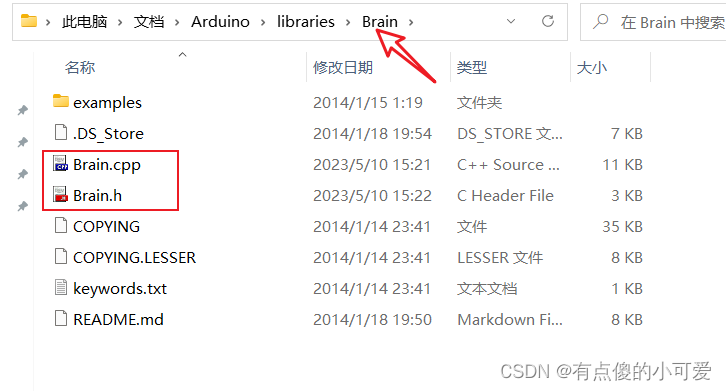

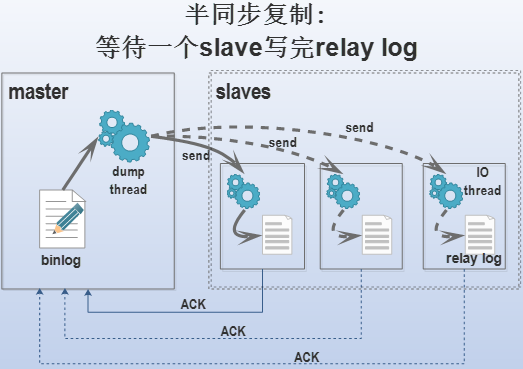


![[Golang] 设计模式以及单例设计模式实例实现](https://img-blog.csdnimg.cn/290cb82ff7834878aff2daa6c4a0bf4f.gif#pic_center)

